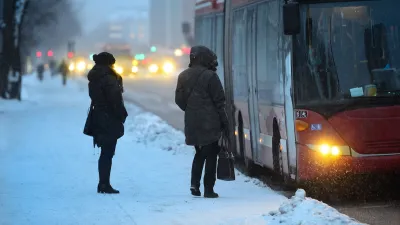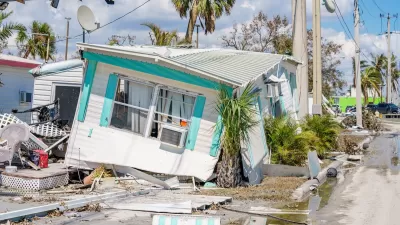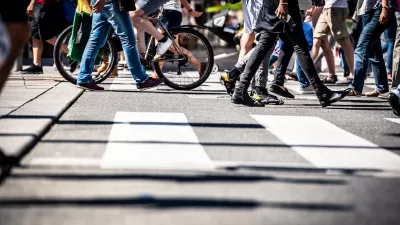Extreme temperatures aren’t just a public health concern: they also affect how we get around.
Everything from car and bus travel to air travel is negatively impacted by sustained hot weather, Shane D. Phillips explains. Cars and buses face buckling concrete roadways and tar so hot it sticks to tires. Trains are in danger of derailing thanks to warped steel rails. Airplanes can’t find the lift they need in extreme hot weather.
Pedestrians and cyclists find it especially hard to get around in the heat. The result? More people stay indoors or in their cars, relying on fossil fuels to keep them cool and to get from place to place.
“This is especially tragic for its timing,” Phillips writes. "Just as we’re finally seeing success in turning the tide back toward healthier, more sustainable lifestyles, tens of millions of people are being instructed to stay indoors and rely on air conditioning to get them through half the year or more.”
FULL STORY: Extreme Temperatures Are Affecting Every Mode of Transportation

Planetizen Federal Action Tracker
A weekly monitor of how Trump’s orders and actions are impacting planners and planning in America.

Maui's Vacation Rental Debate Turns Ugly
Verbal attacks, misinformation campaigns and fistfights plague a high-stakes debate to convert thousands of vacation rentals into long-term housing.

Restaurant Patios Were a Pandemic Win — Why Were They so Hard to Keep?
Social distancing requirements and changes in travel patterns prompted cities to pilot new uses for street and sidewalk space. Then it got complicated.

In California Battle of Housing vs. Environment, Housing Just Won
A new state law significantly limits the power of CEQA, an environmental review law that served as a powerful tool for blocking new development.

Boulder Eliminates Parking Minimums Citywide
Officials estimate the cost of building a single underground parking space at up to $100,000.

Orange County, Florida Adopts Largest US “Sprawl Repair” Code
The ‘Orange Code’ seeks to rectify decades of sprawl-inducing, car-oriented development.
Urban Design for Planners 1: Software Tools
This six-course series explores essential urban design concepts using open source software and equips planners with the tools they need to participate fully in the urban design process.
Planning for Universal Design
Learn the tools for implementing Universal Design in planning regulations.
Heyer Gruel & Associates PA
JM Goldson LLC
Custer County Colorado
City of Camden Redevelopment Agency
City of Astoria
Transportation Research & Education Center (TREC) at Portland State University
Jefferson Parish Government
Camden Redevelopment Agency
City of Claremont





























